Opinion
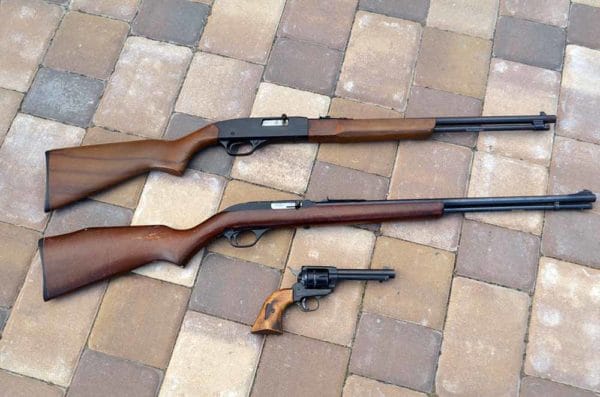
U.S.A. –-(Ammoland.com)- One of my hobbies is buying broken old guns and fixing them up. Depending on the type of firearm, this can vary between simple fixes to get a gun up and running again to an almost full restoration, and sometimes you discover you “bought a pig in a poke” along the way.
I recently picked up a handful of broken firearms that I repaired within a few weeks.
- Marlin Model 60 (2)
- Winchester Model 190
- Kimel Western Six
I paid the princely sum of $9.99 a piece for them at my local Cabela’s. This store buys more used firearms than all the other stores combined due to the close proximity to California. Usually, gems such as these are only obtained as part of a larger collection. Guys like me come in and pick up these scraps from time to time.
Marlin Model 60 Rifle
It is said by some to be the most prolific 22 rifle in the past 60 years. According to Marlin, they manufactured over 12 million Model 60s in that time period.
I will be honest, I did not grow up shooting these rifles. My first 22 was a Ruger 10/22 with a detachable 10-round rotary magazine in the late 1980s. I thought the tube magazine on the Marlin was a huge step backward. I have yet to see someone shooting one of these at a range, either, but have seen hundreds in people’s collections, at gun shows, and at gun shops.
The two I picked up were in rough shape. The first one was the old Glenfield variant with the squirrel “engraving” on the stock. Except the stock had been smashed behind the trigger guard and the inner part of the magazine tube was missing. The barrel and tube were tied on with string, and the previous owner was a fan of duct tape.
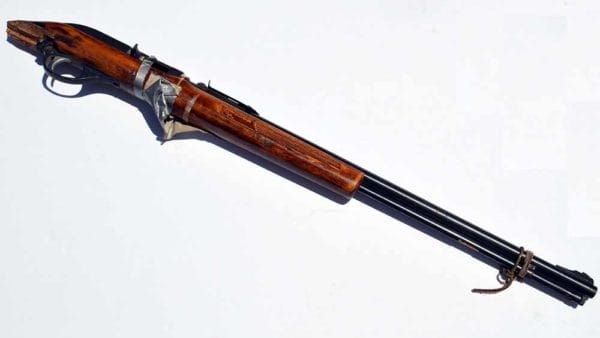
Now, the second one looked to be a complete rifle. It was missing its sights, was covered in surface rust and the brass inner magazine tube was too long. It turned out that it was the missing tube from the first rifle.
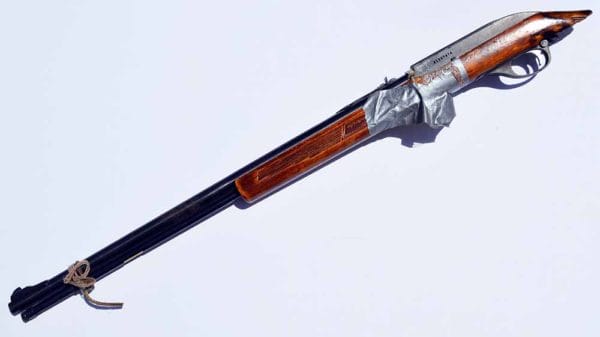
I was originally hoping to build one rifle from the two of them, but found a “complete kit less the receiver” on Gunbroker from an outfit called Gunbusters of Florida. This company destroys firearms earmarked as such by government agencies, but pulls all the parts before crushing the receiver. I won the auction for $55 and had the kit in less than a week.
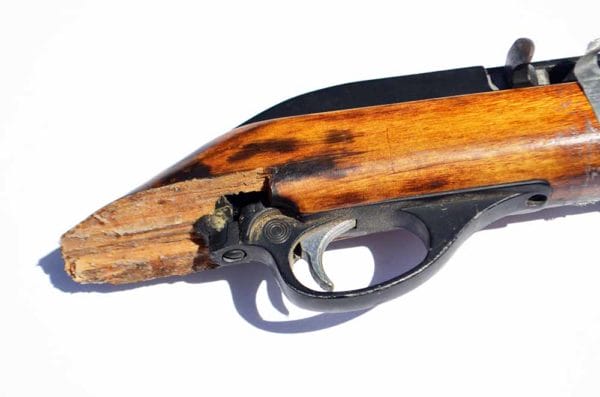
Upon disassembling the first rifle from the receiver, I noticed that the rear stock screw that attaches to the receiver was missing. In fact, it had sheared off clean inside the receiver. With a drill and an easy-out, I removed the remnant of the screw. Using Blue Wonder Gun Cleaner and some fine steel wool, I eliminated the surface rust and then noticed the recoil spring was missing from the bolt.
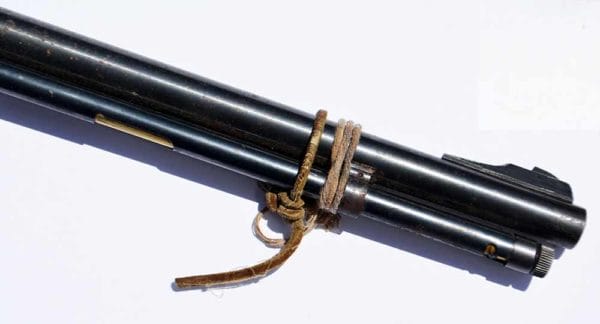
Luckily, the kit from Gunbusters contained a fresh spring and guide rod. I rebuilt everything, installed it in the stock, and had one rifle ready to go.

The second one actually turned out to be a bigger problem than the first, even though it looked complete.

The recoil spring was horribly kinked, so I made a note to order another one, but the bolt was stuck in the receiver and would not come out. I then noticed the receiver was cracked by the ejection port. I may just cut my losses and junk the parts on this one. One homerun, one strike.
Winchester Model 190
Manufactured from 1967 to 1980, the Model 190 was Winchester’s answer to the Marlin Model 60. By 1980, I think they realized that they could not keep up with either the Marlin or Ruger’s 10/22 as far as sales, but they still churned out a respectable 2 million + of these guns.
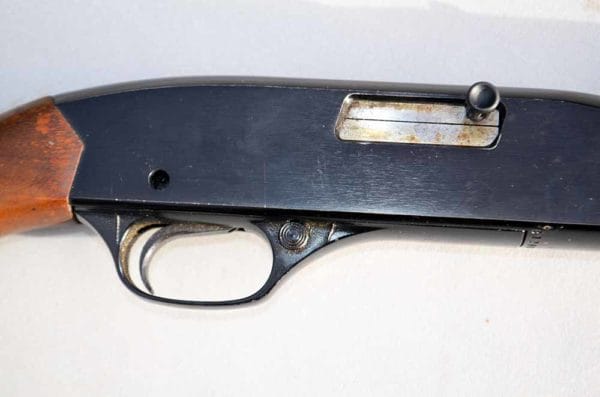
At first glance, this rifle looks like a Marlin Model 60 but has that Winchester “two-piece” stock design going on.
This rifle had a lot of surface rust, a bit of external pitting and was missing the rear trigger guard pin so that the fire control group could rattle around!
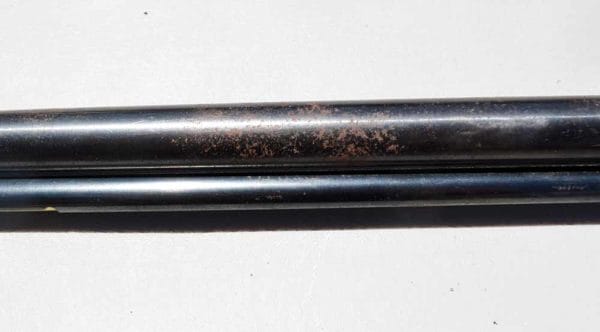
I cleaned her up with Blue Wonder as best as I could. I aligned the trigger group and installed a new pin courtesy of Numrich Arms.

This made up for the second Marlin in case it is beyond salvation, as my total investment in this rifle is about $15.

Kimel Western Six
This one might have been my favorite of this particular group.

I love revolvers, primarily single actions. The grips looked homemade but could have just been substandard wood on a cheap revolver. The cylinder retaining screw was missing, and the finish was pretty beat.

It took a little bit of research based on the markings that I could find on the revolver, but it turned out to be made by Kimel Industries in the 1970s. They were a manufacturer and distributor in Matthews, North Carolina, back in the day who were more famous for their AP-9, which was a TEC-9 knockoff with an electroless nickel finished upper and an HK style front sight with an 18-pound trigger pull. They folded in 1999.
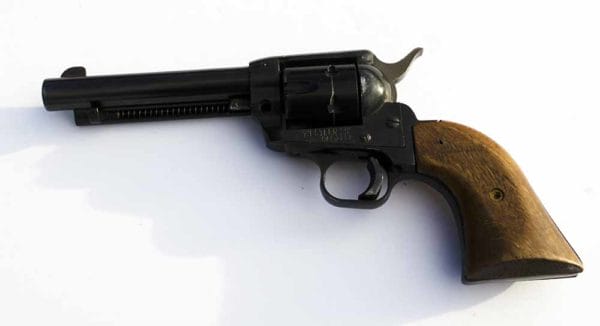
Spare parts appeared to be non-existent. I had heard that Heritage Arms parts might fit, but I had another idea. The revolver was the same size and shape as my Colt Scout in 22lr/22 Magnum. I tried the cylinder retaining screw from my Colt, found that it fit and ordered another one from Numrich Arms.

I got this one up and running for a grand total of $13.95, including the cost of the revolver. I may look to heritage for a set of replacement grips, but the homemade ones seem fine and give it a bit of an “outlaw” look.
It came with a Bianchi open-top holster with a leather thong to hold the hammer, and it might just see duty as a dedicated snake shot revolver.
None of these firearms were valuable at all and apart from detailed cleaning and the repairs; I saw no need to perform a full-on restoration on any of them as it would cost more than they were worth and they held no sentimental value to me. More than likely they will end up with one of my grandkids or be used to introduce another new person to shooting via 22 LR.
The point that I try to get across with these types of articles is not to be so quick to discard an old clunker.
Handling marks give a firearm character, and as long as you can keep it free from the ravages of rust and perform changes of worn parts, most modern firearms will be heirlooms one day if taken care of.
Often you can get them up and running for a small amount of money, and even if the piece is completely unfamiliar, minor repairs can be as easy to perform as being able to disassemble and reassemble the gun.
About Mike Searson

Mike Searson’s career as a shooter began as a Marine Rifleman at age 17. He has worked in the firearms industry his entire adult life as a Gunsmith, Ballistician, Consultant, Salesman, Author and was first certified to teach firearms safety in 1989.
Mike has written over 2000 articles for several magazines, websites and newsletters including Blade, RECOIL, OFF-GRID, Tactical Officer, SWAT, Tactical World, Gun Digest, Examiner.com and the US Concealed Carry Association as well as AmmoLand Shooting Sports News.
- Home page: www.mikesearson.com
- FB: www.facebook.com/mike.searson
- TWITTER: www.twitter.com/mikesearson
